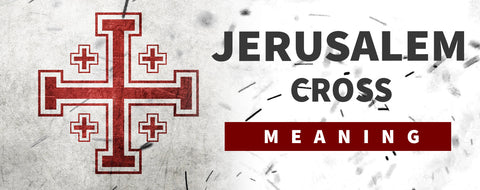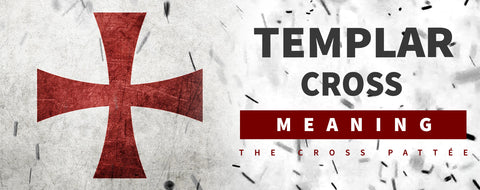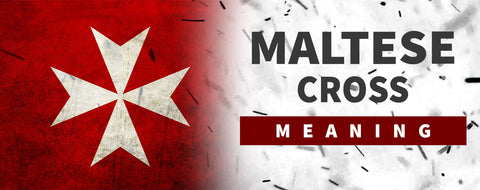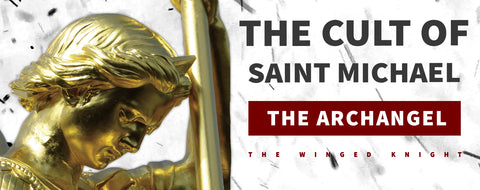
Knights Templar Today, What About Them ?
of reading - words
Being a Knight Templar today means affirming one's Christian faith (respecting the dogma of Christianity) while respecting the world around us, it also means getting to know oneself better in order to improve oneself, as you will have understood : it is a daily quest. The Order of the Knights Templar celebrated its 900th anniversary in 2018. The modern Templars remain faithful to the precepts that guided these remarkable men from the year 1095 to the year 1314. These warrior monks were Catholics.
The motto of the Templar Order is : Non Nobis Domine, Non Nobis, Sed Nomini Tuo Da Gloriam.
*However, nowadays even if men and women have decided to raise the Order of the Knights Templar, it is in violation of the Papal Bull 'vox in excelso' of May 1312 which was never repealed !

1) Can one still be a Knight Templar nowadays ?
What became of the Templar Order after 1312 ?
Is it possible that the Order of the Temple survived its destruction in 1312 ? If so, how does this spirit manifest itself today, in the 21st century ?
Let's go back to Friday, October 13, 1307, the date of the arrest of all the Knights Templar in France.
At the beginning of October 1307, Jacques de Molay, Fernand de BRENZE, Gérard Devilliers, Hugues de Chalon, who had heard about the royal project, decided on the departure of a hundred Templars with a convoy of carts. No one knows what these carts contained. This convoy barely left the Temple Tower and split in two, the first one bound for England via the port of Boulogne sur mer, landed in England near WEYMOUTH from where it was turned back on October 23, 1307, by order of the King of England, son-in-law of Philip the Fair. It should be noted that the English were very courteous in the way of prohibiting this landing. The Templars therefore took to the sea to land in Scotland, in the region of KILWINNING, where they received a very good reception and of which they made a Templar center. The second convoy set sail for Portugal via the port of La Rochelle.

In conclusion, and although this arrest was prepared several weeks in advance in the greatest secrecy, certain high dignitaries of the Order of the Temple were warned of it. How could these Templars let themselves be arrested without putting up any resistance ?
At that time, the Order had 9,000 Commanderies and more than 20,000 Knights Templar in France (not counting the Squires, Sergeants and Brothers working in the commanderies), had a cavalry, had its own fleet, was all-powerful and very well organized. Can we still believe that the secret of their arrest was not revealed at least once, it is very likely that this secret was broken and that some Templar dignitaries were warned but, alas, too late to organize any resistance? So there were arrests, but nevertheless some Knights of the Temple managed to escape from the provosts. They took refuge in Lorraine with the Teutonics, others in Scotland, others withdrew to their strong Portuguese position of THOMAR.
2) The Modern Templars
A. The Fundamentals of the Modern Templars
To perpetuate the noble traditions of the ancient Knighthood.
To defend the acquired liberties, to promote the necessary reforms for the most destitute, to practice charity and charitable works.
Yesterday as today the Knight Templar is a man :
- Who has faith in Jesus Christ and loves his neighbor as himself?
- Who imposes himself with gentleness?
- Who is morally strong while remaining humble?
- Who is a social example and an honest man?

B. The Commandments of the modern-day Knight Templar
- Start by improving yourself before you pretend to improve others and the world around you.
- Remember the example of the ancient Templars and the articles of our Rule, especially article 386.
- Fight relentlessly in defense of the weak and oppressed.
- Live your life according to your deepest convictions, without hypocrisy and always respecting the convictions of others.
- Always be frank in what you say and loyal in what you do.
- Always be faithful to your commitments and honor the word you have given.
- Cherish nothing so much as spirituality, brotherhood and friendship.
- Always prefer dialogue and consultation to confrontation and war.
- Face with courage all the difficulties you face, knowing that you will find in yourself and in these high principles the strength to get through the trials.
- Never forget that your fundamental rights and freedom end where those of others begin.
- Never forget that the value of a human being lies in what he really is, not in what he possesses or appears to be.
And finally the main commandment : honor our former glorious Catholic warrior monks, and recite your Hail Mary and Our Father prayers !
3) Being a Knight nowadays
A. Chivalry in the Holy Land from the 12th to the 13th century
The Knights Templar had to defend by arms an earthly kingdom "the Latin states of the East". Saint Bernard in the 12th century already called the Knights of the Temple, "a militia of a new kind unknown in past centuries" ... The Templars in the East fulfilled their task towards the papacy, without failing, without demerits. Abandoned by all the Western lords from 1250, they defended the Latin States alone with the Hospitallers and the Teutonics. The year 1250 sounded the death knell for the slow agony of Near Eastern Christianity. In 1250 they fought 1 against 3, then 1 against 10 in 1291, and were crushed definitively in Acre in 1291.

B. Chivalry Today (21st century)
In our modern society, the word "chivalry" always evokes a strong symbol, in which she perceives the image of values she feels the need for faith in Christ, generosity, commitment without calculation. According to some psycho-sociologists, the society of the 21st century dreams of abandoning the values of the end of the 20th century (reign of the materialism of the profit of the egoism, etc...). Nowadays, the gift, the gratuity, the generosity return in force in the heart of the modern society. This modern society aspires not to let blind forces and obscurantism bruise the time. This is precisely the message contained in the encyclical Caritas in Veritate published by Benedict XVI in 2009. Benedict XVI advocates social and solidarity enterprises, networks of mutual generosity, and calls for a different idea of living together, one that is drawn from the depths of the Christian tradition. The Pope's vision ("to feel responsible for all") applies to all levels of society. In § 6, the encyclical says that justice is "the first way of charity". In § 7 it emphasizes that acting for the common good builds "that Universal City of God towards which the history of the human family is advancing". Thus, according to Benedict XVI, justice and the common good are the two criteria of Christian social commitment in the 21st century, in a society "on the path of globalization". These immutable criteria have been valid for every century for almost two thousand years.

They have been the pillars of Christian civilization in the West and in the East. On closer inspection, one thing is obvious : what the Church of the 21st century recommended to the actors of the economic world, the Church of the 11th century recommended to the actors of the feudal world. Justice and solidarity to serve, humbly and with difficulty, a superior common good : this was the ideal proposed by the Church to the Knight of the Year 1000, transcended by the Knights Templar. This ideal responds to the aspirations of the human being : therefore capable of being reborn over the centuries, in other forms. It is not surprising that the simple evocation of the word "knight" can keep a meaning, ten centuries later, in a universe very different from that of the Middle Ages. In the 21st century, as in the 11th century, it is always a question of justice and solidarity for a common good : the Peace of God to be reinvented for the salvation of society. The Christian source is permanent. In the course of history, where it irrigates unprecedented situations, it makes new works flourish or gives new meaning to ancient traditions. In the barbaric world of the Middle Ages, the Church Christianized a social phenomenon (clans of young warriors on horseback) to make it a tool for pacification : thus, says Gerard de Cambrai (1215), "Chivalry was promoted to put an end to chaos". The Church at that time wanted to transform the wild fighter into a "good knight" altruistic the Knight Templar is the result. For a few centuries the knights tried, as best they could, to observe the incongruous ideal that was proposed to them : to defend the widow and the orphan, to act as peacemakers and not as criminal thieves. This adventure will fade away at the end of the Middle Ages, but it will have given birth to memorable achievements. The image of the knight will remain for all, the loyal man, "compassionate towards the suffering, ready to help, generous with generosity" : an archetype that will remain in the collective consciousness.
Our era has other aspirations than that of Bernard de Claivaux or Chrétien de Troyes. But there are always sufferers who hope for the help of disinterested people, and always a Church that calls for disinterestedness... To answer this call of the Church today is to face challenges that are unrelated to those of the past.
C. Knighthood in the West
In the West in general, and in the very secular French society in particular, the modern knight is called (like every believer) to an equally humble and difficult task : the New Evangelization. "To evangelize an entirely new society", said Cardinal Lustiger... Now there is no contradiction, but agreement, between the novelty of this evangelization and the spirit of Knighthood. Humility and perseverance are conditions of evangelical witness, and the fact that this witness is assumed within an Order of Knighthood emphasizes the duty to be humble and persevering. Lived in everyday life by the knight, his spirit of witness is also expressed in the service of his parish, especially in his presence at the liturgical manifestations of the Order. For him this is an increased responsibility : "You must always be ready to explain yourselves before all those who ask you to give an account of the hope that is in you" (1 Pt 3:15). And this is one of the outcomes of the work of the spiritual animation circles of the Order, which thus participate in the New Evangelization. The believer writes Marie-Noëlle Thabut, "never forgets that he is part of a people and that every vocation, far from setting him apart, places him at the service of these people". For the modern knight in his specific vocation, there are even two peoples : that of his own country and that of the Holy Land. The Church assigns to our Order (since the founding letter of Pius IX) the knightly form. It is not an ornamental luxury. The Christian soul of a Modern Chivalry is the commitment humble and irreversible to militate through the gift of self : this leads to a social responsibility and a spiritual life, which paradoxically respond to very contemporary expectations : the spirit of poverty overcoming materialism, gratitude overcoming doubt, hopes to overcome the absurd.

D. Chivalry and the spirit of poverty
To be a member of the Order of the Knights Templar is a mission received from the Church, which clothes us in the mantle of duty. In all areas, therefore, it is a question of following her will, not ours, and of seeing situations as she sees them, not as our environment or our sensitivities see them. To be "poor knights of Christ" today, as Saint Bernard said, is to strip ourselves of our opinions and our reflexes of interests. Every Catholic is called to live the faith with this radicalness, a fortiori the Modern Knight of the Order. His specific mission also includes "zeal for self-denial in an affluent society", which implies a responsible commitment to mankind and the rest of creation (especially in these times of crisis in a society of materialistic consumption), since the Church asks us to open the way for a new way of life in the West by becoming pioneers of a civilization of sobriety : the "radiant self-limitation" of which Solzhenitsyn spoke in his Harvard speech.
E. Chivalry and gratitude
This is the spirituality of the modern knight. In the heart of the night, the work of the Resurrection is accomplished without the disciples' knowledge and without merit on their part : on the contrary, they are prey to doubt and despair... Until the upheaval of Easter dawn. Then gratitude lifts them up ! In a Europe which has become almost alien to Christian culture, and where faith must be revealed anew, the New Evangelization goes through the discovery of this impulse of gratitude, which unpredictably satisfies man's thirst and anguish.
F. Chivalry and hope
As the Eternal One infinitely envelops our very short earthly time, the Resurrection of Christ infinitely overflows History, which cannot "contain" it : but it strikes History with full force and gives it an irreversible meaning, towards the forward and upward, which guides the commitment of the Christian through the centuries. The Modern Knight of the Order of the Knights Templar commits himself in an equally irreversible way (and this is only possible with the grace of God) : he dedicates himself to witnessing, in all aspects of his own life and in an age undermined by the absurd, to the hope that comes from the Risen One crossing the sepulcher !







Larry White
I Love the history of the Order. I think the Templers were put in a bad light after the arrest. I like what you stand for in this day and time when the world has turned against Christians. I am not catholic, but I do believe in our Lord Jesus Christ.
Frank Scheidel
Very good read!
Jonathan
Glorious, loved this article.